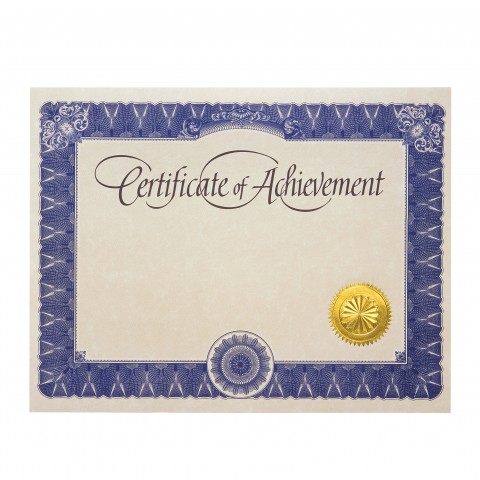
Polish language exams may not be as popular and well-known as the English ones. This doesn’t mean, however, that Polish-learners have no way to prove their language proficiency.
So what exams are available for people learning Polish? Is there a Polish test for beginners? If so, how does one prepare for the Polish A1 exam?
Patience, grasshopper. You’ll find the answers to all of these questions—and much more—in this article.
 Table of Contents
Table of Contents
- General Information About the Polish Language Test
- What’s Inside the Test?
- Preparation for the Polish Exam
- Final Thoughts
1. General Information About the Polish Language Test
The British have FCE, CAE, and CPE. The French have DELF and DALF. The Polish, unfortunately, don’t use an acronym for the Polish language test. You’ll need to remember a slightly longer name: egzamin certyfikatowy z języka polskiego jako obcego (“certificate examination in Polish as a foreign language”).
A- Test Levels
The Common European Framework of Reference for Languages (CEFR) recognizes six levels of language fluency. The Polish exam for adults is currently available only at higher levels: B1 (intermediate), B2 (upper-intermediate), and C1 (advanced). This means that there’s no official Polish test for beginners yet.
Don’t despair! There may not be a Polish A1 exam for you to take at the moment, but the first Polish A2 exam is planned for the end of 2020. See the official website for a full list of exam sessions in 2020.
The most popular of the general Polish language proficiency tests is the B1 Polish language exam, and there’s a good reason for this. Passing the B1 Polish exam is a requirement to:
- Obtain Polish citizenship (obywatelstwo polskie)
- Get a Polish permanent residence permit (zezwolenie na pobyt stały)
- Study in Poland (studium w Polsce)
However, you may want to get a higher-level certificate to improve your CV, increase your chances of getting hired in Poland, or simply for personal satisfaction.

- → Before you move to Poland, remember to check out our lesson about the top five things you need to know about Polish society.
B- Test Structure
The Polish language certification exam consists of two parts: a written section and an oral one. They usually take place on two different days, but you can ask to take both on the same day. This would be useful, for instance, if you live far away from the exam center.
The written part is divided into four sections:
- Listening
- Text comprehension
- Grammar
- Writing
The length of the written exam is around 190 minutes. The oral exam is no longer than 15 minutes.
To pass the exam, you need to obtain at least a fifty percent score on each component. If you need some motivation to learn enough Polish for the test, go to our lesson on the top five reasons to study Polish!
C- How and Where to Take the Test

There are numerous centers where the Polish language exam can be taken, after you register and pay the exam fee. You can find more information about the exam centers here.
2. What’s Inside the Test?
In the following sections, we’ll outline what you can expect to see in each section of this Polish exam for foreigners. This will allow you to better prepare for the test, and study appropriately!
A- The Polish Listening Exam
The listening comprehension (rozumienie ze słuchu) component is taken with the written part of the exam. After 25 minutes, the test sheets are collected and you have a short break.
What to Expect
This part of the exam is aimed at checking your listening comprehension skills. You’ll listen to a number of recordings and follow the instructions to answer the questions. Usually, you’ll hear each recording twice, but occasionally, only one listening is allowed.
The instructions will clearly state what you’re supposed to do in a given task. You can expect a variety of different exercises here, such as multiple-choice, true-or-false, and filling in the blanks. You may also be asked to provide your answer in writing.
Useful Tips:
- Prepare for this part of the exam by listening to various materials and taking notes.
- During the exam, read the answers before the recording begins, if possible.
- Remember to answer the questions or mark your answers in the way specified in the instructions.
Are you looking for some exercises to practice your listening skills? PolishPod101.com has a series of listening comprehension exercises just for beginners. The first installment of this series is “At the Jewelry Store.”
B- The Polish Reading Exam
The reading comprehension (rozumienie tekstów pisanych) section is the second part of the exam. This time, you’ll have 45 minutes to complete the tasks. The exam sheets are collected after this duration of time.
What to Expect

The purpose of the reading component of the Polish certificate exam is to test your general and specific understanding of the written language. You can expect the following types of exercises: multiple-choice, true-or-false, and written answers.
Useful Tips:
- Don’t rush through the texts. Some questions may be tricky.
- If you have any time left, reread the text and check your answers again.
- Don’t panic. You don’t need to understand every word to understand the text.
You can start practicing the skills necessary to pass this part of the exam with the first lesson in our reading comprehension series: “Buying a Train Ticket.”
C- The Grammar Portion of the Test
The grammar—or more specifically, the grammatical correctness (poprawność gramatyczna)—portion of the test lasts for 45 minutes. After this time, the worksheets will be collected.
What to Expect?
Polish grammar (gramatyka języka polskiego) is feared by many students. You shouldn’t be too scared of this part of the exam, though. When you study hard, correct forms will come naturally to you.
The types of questions you can expect are: multiple-choice, filling in the blanks, paraphrasing, formation of words, and proper verb forms.
Useful Tips:
- When preparing for the exam, study verb conjugations carefully.
- Be particularly careful with subject-verb agreement as well as with adjectives and possessive pronouns.
- When you don’t know the answer, let your linguistic instinct lead you. You know more than you think you do!
Our Painless Polish Grammar page will certainly help you with the grammar component of the Polish language exam.
D- The Polish Writing Exam
Expressing oneself through writing (wypowiedź pisemna) is the last (and longest) part of the written exam. You have 75 minutes to complete it.

What to Expect
You’ll have to complete certain tasks aimed at checking your writing skills in Polish. The topics are general and examiners aren’t interested in checking your knowledge. They just assess your Polish writing skills.
Usually, there are three different sets to choose from. Each set contains two tasks that you’ll have to complete in a given amount of time. When the worksheets are taken away, you’re done for the day!
Useful Tips:
- Keep the word limit in mind. It’s there for a reason, and you may lose points or even be disqualified if you ignore it.
- Choose the set of tasks you feel best prepared for.
- Remember to reread what you’ve written and correct any mistakes you find.
What’s the easiest way to start writing and improve on your own? Click on the link to find out.
E- The Polish Speaking Exam
The Polish oral exam (egzamin ustny) is the shortest part of the exam, at only 15 minutes long. As previously mentioned, it’s usually taken on a different day than the written exam.
What to Expect
The test consists of three different tasks. The first two are monologues and the third one is a discussion with a member of the jury. There are different sets available, but you choose them at random without looking at them. Once you have your set, you’ll have approximately 5 minutes to prepare.
Before you start the actual exam, you’ll have a short, general conversation with a jury. After that, you can present what you’ve prepared in any order you choose. The jury is allowed to ask you questions.
Useful Tips:
- If you’re stressed, speak slower. You’ll make fewer mistakes.
- Don’t panic if you forget a word. Simply describe what you mean.
- Try to use synonyms and different grammatical structures.
Before you register for the Polish as a second language exam, remember to learn the one hack for speaking real-life Polish.
3. Preparation for the Polish Exam

You already know where to find specific information about the test, such as Polish B1 exam dates and locations. You’ve also read about the exam structure and know more about what to expect. Last but not least, we’re going to give you some recommendations on how to prepare for this exam.
Do Mock Tests
The best way to prepare for an exam is by taking mock tests. Doing so will give you practical knowledge about the test.
When you know what to expect, and are thus unlikely to be surprised, it’s much easier to manage stress. You can find some sample tests on the official website of the certificate.
Listen to More-Experienced Students
Try to get advice on the test from people who’ve already passed it. If you don’t have access to anyone like this, simply look for testimonials and articles online.
Work on Your Vocabulary
The more words you know, the less probable it is that you’ll get stuck. You’ll find useful vocabulary in Polish series, movies, and books, as well as in our vocabulary lists.
Speak, Listen, and Read
There are countless possibilities to speak, listen, and read Polish. Find a language partner online or in real life, listen to Polish podcasts, or read newspapers.
Get a Tutor
You can improve your fluency with a language partner, but speaking and writing are difficult skills to master without proper help from a professional.
Kill two birds with one stone by getting an account with PolishPod101.com. With our Premium PLUS option, you’ll not only get access to countless learning materials, but also to our MyTeacher program with one-on-one tutoring.

4. Final Thoughts
There’s no Polish test for beginners, but with a bit of work you can definitely manage to get a higher certificate in the Polish language. Remember to start preparing way in advance and don’t forget to register. If you’re prepared, you’re unlikely to fail. However, in the unlikely event that you do, you may find some consolation in this article.
The Polish A1 exam may not be available yet, but who knows what the future holds? If you don’t want to wait, get your free lifetime account with PolishPod101.com today. This way, you can work on your Polish vocabulary and other Polish skills to ace a higher level of the official Polish proficiency test.
Is there anything you still want to know about Polish language proficiency tests? Let us know in the comments, and we’ll do our best to help you out!










